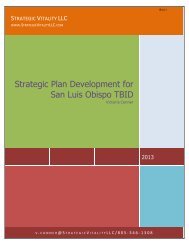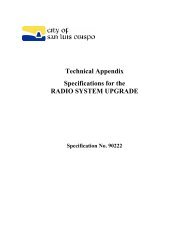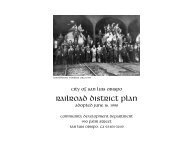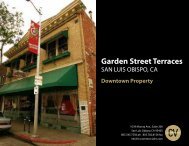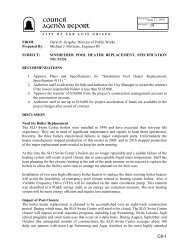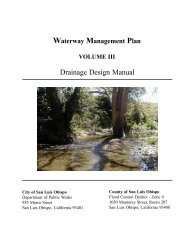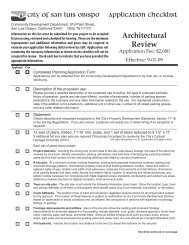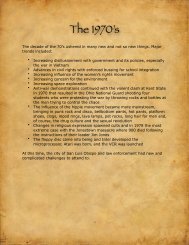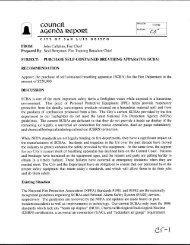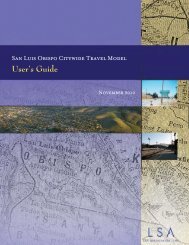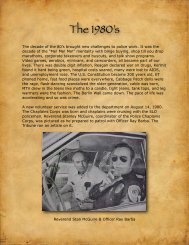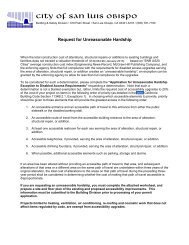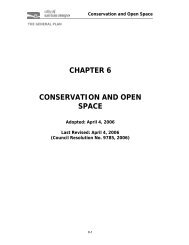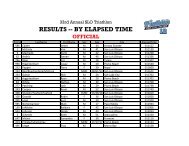Guide to Estimating Irrigation Water Needs of Landscape Plantings
Guide to Estimating Irrigation Water Needs of Landscape Plantings
Guide to Estimating Irrigation Water Needs of Landscape Plantings
You also want an ePaper? Increase the reach of your titles
YUMPU automatically turns print PDFs into web optimized ePapers that Google loves.
Chapter 4—<br />
Using the <strong>Landscape</strong><br />
Coefficient <strong>to</strong> Estimate<br />
<strong>Landscape</strong><br />
Evapotranspiration<br />
The landscape coefficient and reference evapotranspiration<br />
now are used <strong>to</strong> estimate landscape evapotranspiration<br />
for the plantings described in<br />
Chapter 3. This chapter completes the process used<br />
<strong>to</strong> produce estimates <strong>of</strong> landscape water loss. Subsequent<br />
chapters discuss how <strong>to</strong> use estimates <strong>of</strong><br />
ETL <strong>to</strong> calculate <strong>to</strong>tal irrigation water needs and how<br />
<strong>to</strong> apply this information in landscape management<br />
programs.<br />
In Chapter 3, seven landscape planting cases were<br />
described and used for landscape coefficient calculations.<br />
These cases will be used here <strong>to</strong> calculate<br />
landscape evapotranspiration with the ETL formula.<br />
The ETL formula was described in Chapter 2 and is<br />
presented here for quick reference:<br />
ETL = KL x ETo<br />
<strong>Landscape</strong> Evapotranspiration =<br />
<strong>Landscape</strong> Coefficient x Reference Evapotranspiration<br />
For each case, reference evapotranspiration (ETo)<br />
values will be taken from Appendix A. All are normal<br />
year average values for the month <strong>of</strong> July for<br />
the respective locations.<br />
Case 1— KL = 0.5<br />
ETo for San Jose = 7.44 inches<br />
ETL = 0.5 x 7.44 = 3.72 inches<br />
Case 2— KL = 0.24<br />
ETo for Los Angeles = 6.5 inches<br />
ETL = 0.24 x 6.5 = 1.56 inches<br />
Case 3— KL = 0.8<br />
ETo for Sacramen<strong>to</strong> = 8.6 inches<br />
ETL = 0.8 x 8.6 = 6.88 inches<br />
Case 4— KL = 0.25<br />
ETo for San Francisco = 4.9 inches<br />
ETL = 0.25 x 4.9 = 1.22 inches<br />
Case 5— KL = 0.30<br />
ETo for Pasadena = 7.4 inches<br />
ETL = 0.30 x 7.4 = 2.22 inches<br />
Case 6— KL = 0.78<br />
ETo for San Diego = 5.8 inches<br />
ETL = 0.78 x 5.8 = 4.59 inches<br />
Case 7— KL = 0.1<br />
ETo for Monterey = 5.5 inches<br />
ETL = 0.1 x 5.5 = 0.55 inches<br />
These calculations show that landscape irrigation<br />
water needs vary substantially. Estimates range from<br />
0.55 inches <strong>to</strong> 6.88 inches—more than a 12-fold difference.<br />
The two fac<strong>to</strong>rs used <strong>to</strong> determine ETL, the landscape<br />
coefficient and reference evapotranspiration,<br />
are solely responsible for producing these differences<br />
in water loss estimates. For plantings in the<br />
same location (i.e., where the same ETo values will<br />
be used), the differences will arise solely from the<br />
landscape coefficient. To produce useful estimates<br />
<strong>of</strong> water loss, therefore, it is important <strong>to</strong> carefully<br />
determine the value <strong>of</strong> KL.<br />
27



